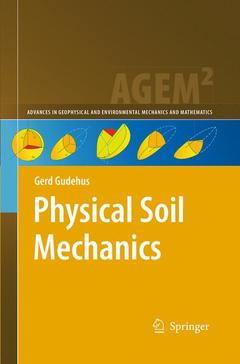Description
Physical Soil Mechanics, 2011
Advances in Geophysical and Environmental Mechanics and Mathematics Series
Language: English
Subject for Physical Soil Mechanics:
Keywords
Cracking; Elastoplasticity; Hypoplasticity; Peloids; Pore Fluid; Psammoids; Shear; Soil; Tectonic
Publication date: 08-2016
Support: Print on demand
Publication date: 01-2011
840 p. · 15.5x23.5 cm · Hardback
Description
/li>Contents
/li>Biography
/li>Comment
/li>
Soils are complex in composition, state and behaviour
Graphical representation helps to lighten the constitutive relations
The concept of related evolutions of state and shape works throughout more complex boundary value problems
It is a powerful tool which is useful for the description of soils and their properties
Includes supplementary material: sn.pub/extras




